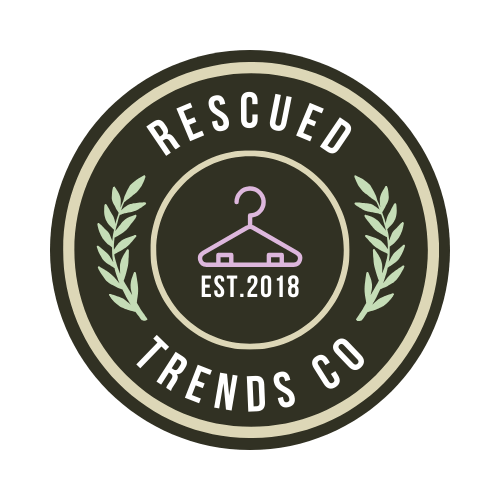
10 Shocking Facts About Clothing Waste (and How You Can Help)
Most of us love fashion — the thrill of new styles, colors, and trends. But what often goes unnoticed is the massive amount of waste the fashion industry creates. Every year, billions of garments are produced, and millions end up in landfills far too soon. At Rescued Trends Co., we believe knowledge is power. Once you see the reality of clothing waste, you’ll understand why shopping second-hand is one of the most impactful choices you can make.
Here are 10 shocking facts about clothing waste — and practical ways you can help.
1. 92 Million Tons of Clothing Waste Each Year
Globally, the fashion industry produces around 92 million tons of textile waste annually. That’s equivalent to one garbage truck full of clothes being dumped every single second.
How you can help: Choose second-hand clothing instead of buying new. Every piece you rescue makes a difference.
2. Fast Fashion = Short Lifespan
On average, people only wear an item of clothing seven to ten times before discarding it.
How you can help: Buy timeless, versatile pieces you’ll love and rewear — or shop preloved for longer-lasting quality.
3. Only 12% of Clothing Gets Recycled
Despite recycling bins and donation programs, only a tiny fraction of clothing actually gets recycled into new garments.
How you can help: Donate responsibly and look for ways to upcycle or repurpose your clothes before throwing them away.
4. The U.S. Throws Away 11.3 Million Tons of Textiles Each Year
That equals about 2,150 pieces of clothing thrown away every second in the U.S. alone.
How you can help: Extend the life of your wardrobe — repair, resell, or rehome your clothing.
5. Clothing Takes Up to 200 Years to Decompose
Synthetic fabrics like polyester can take centuries to break down, all while releasing harmful microplastics into the environment.
How you can help: Choose natural fibers when possible and give synthetics a second life by shopping preloved.
6. 1 in 3 Young Women Think Clothes Are “Old” After One Wear
Social media culture has fueled the idea of “outfit repeating” being a fashion faux pas.
How you can help: Embrace outfit repeating proudly — and share your sustainable looks online to inspire others.
7. Clothing Production Uses Billions of Gallons of Water
It takes about 1,800 gallons of water to make a single pair of jeans.
How you can help: Rescue denim second-hand. Each thrifted pair saves massive amounts of water.
8. Up to 85% of Textiles End Up in Landfills or Incinerators
Even donated clothes often don’t get resold — many are shipped overseas or destroyed.
How you can help: Buy less, choose well, and support businesses committed to rescuing clothes like Rescued Trends Co.
9. Microplastics Are Everywhere
Washing synthetic clothing releases microplastics into the ocean — contributing to pollution that harms marine life.
How you can help: Use a microplastic filter bag when washing synthetics and buy second-hand to slow down production.
10. Fashion Waste Equals Climate Impact
The fashion industry is responsible for up to 10% of global carbon emissions — more than international flights and shipping combined.
How you can help: Shop consciously, invest in quality pieces, and support second-hand sellers making sustainability stylish.
The fashion industry is responsible for up to 10% of global carbon emissions — more than international flights and shipping combined.
How you can help: Shop consciously, invest in quality pieces, and support second-hand sellers making sustainability stylish.
#Shoppreloved ♻️
Copyright 2025 @rescuedtrendsco - Privacy - Terms



